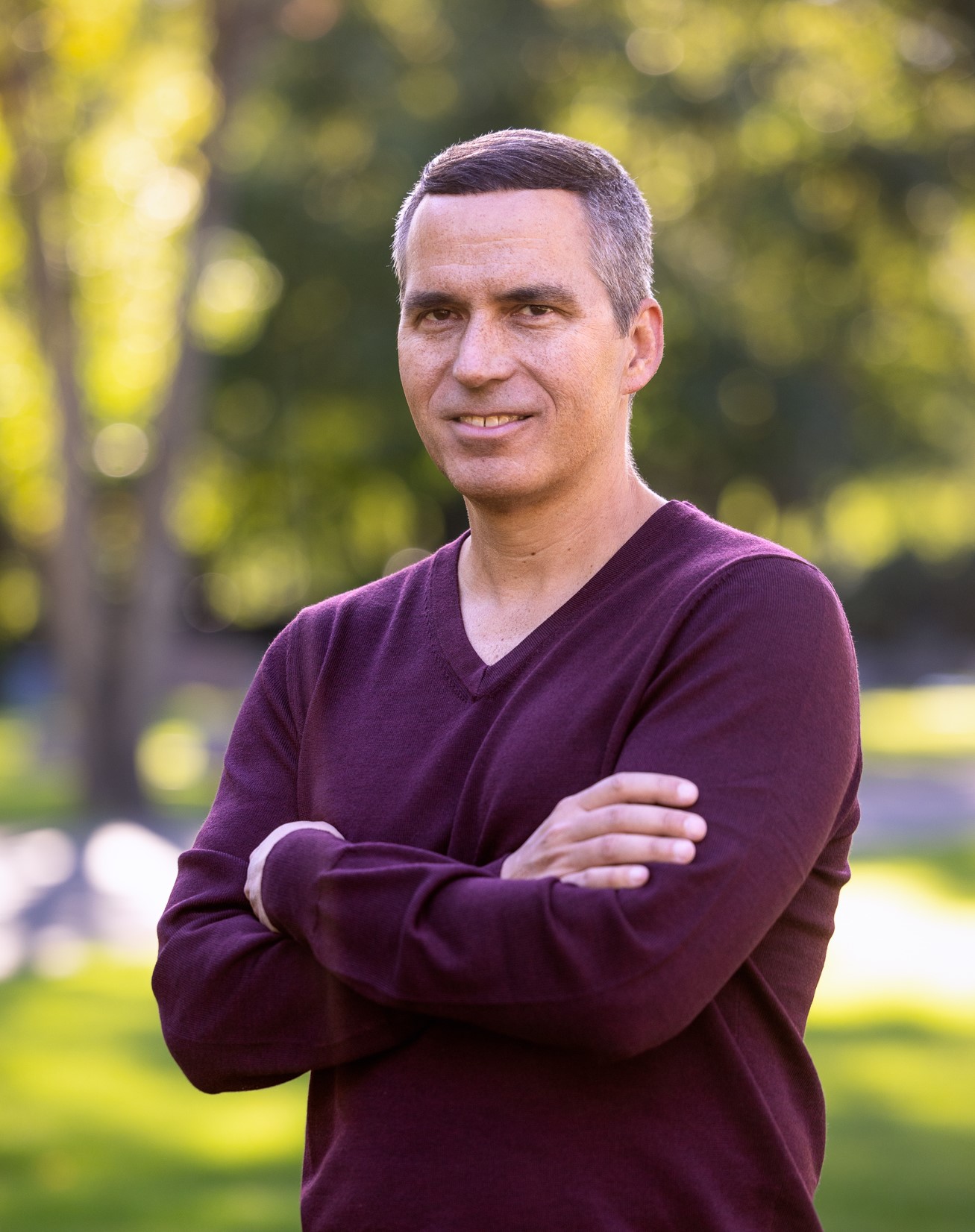
by Jean-Simon Berthélemy
by Wilton H. Strickland
According to legend, when Alexander The Great arrived in Phrygia he encountered an ox-cart bound to a post with an elaborate knot. An oracle had foretold that anyone who could unravel the knot would become ruler of all Asia. After attempting to puzzle out the knot’s intricacies for a while, Alexander drew his sword and sliced the knot in half. The expression “cutting the Gordian knot” came to mean resolving a confounding problem with a simple and bold solution.
Just such a solution is needed with regard to free speech, whose meaning and scope within the United States have become knotty problems indeed. Some people seek to outlaw “hate speech.” Others seek to outlaw flag-burning, “misgendering,” or “cyber-bullying.” Others seek to enact “campaign finance reform” to prevent the wealthy from unduly influencing elections. And others seek to outlaw social-media companies from silencing or “canceling” unpopular voices. Standing in the way is a body of jurisprudence from the U.S. Supreme Court that forbids government regulation of speech except in a select few circumstances, most prominent among them the incitement to immediate violence or lawlessness. See Brandenburg v. Ohio, 395 U.S. 444 (1969). This jurisprudence is increasingly at odds with a changing society, and it leaves many people wondering what can be done. There is, in fact, a simple solution: apply the First Amendment as written and intended.
The First Amendment states as follows:
Congress shall make no law respecting an establishment of religion, or prohibiting the free exercise thereof; or abridging the freedom of speech, or of the press; or the right of the people peaceably to assemble, and to petition the Government for a redress of grievances.
The plain language of the Amendment is aimed solely at Congress and does not restrict the state governments, who remain free to experiment with diverse solutions for the problems occasionally associated with speech. State governments once could and did regulate many varieties of speech, whether it was public profanity, shouting “fire” in a crowded theater, or any number of other things. Indeed, for almost a hundred years after the Bill of Rights was adopted nobody dreamed of challenging a state’s speech restrictions on the basis of the First Amendment. This made sense because the First Amendment, like the rest of the Bill of Rights, was designed to protect the States and the people against the federal government, as explained by famous Chief Justice John Marshall:
The constitution was ordained and established by the people of the United States for themselves, for their own government, and not for the government of the individual states. Each state established a constitution for itself, and, in that constitution, provided such limitations and restrictions on the powers of its particular government as its judgment dictated. . . .
In compliance with a sentiment thus generally expressed, to quiet fears thus extensively entertained, amendments [the Bill of Rights] were proposed by the required majority in congress, and adopted by the states. These amendments contain no expression indicating an intention to apply them to the state governments. This court cannot so apply them.
Barron v. Baltimore, 32 U.S. 243, 247, 250 (1833).
Today, we are told that the First Amendment does not mean what it says, and courts regularly invoke the Amendment to strike down laws that regulate speech even though Congress did not make them. The official explanation for this activism is the Fourteenth Amendment, which was adopted in 1868 shortly after the Civil War to ensure that state governments would not violate the rights of the former slaves (e.g., the right to own property, to enter contracts, to travel, etc.). Yet nobody at that time or for a long time afterwards imagined that this somehow altered the First Amendment. For example, less than a decade after the passage of the Fourteenth Amendment, the Supreme Court noted the following:
The first amendment to the Constitution prohibits Congress from abridging “the right of the people to assemble and to petition the government for a redress of grievances.” This, like the other amendments proposed and adopted at the same time, was not intended to limit the powers of the State governments in respect to their own citizens, but to operate upon the National government alone. . . . It is now too late to question the correctness of this construction.
United States v. Cruikshank, 92 U.S. 542, 552 (1876).
The decision in Cruikshank parallels an even earlier, landmark decision emphasizing that the Fourteenth Amendment was not meant to alter the entire constitutional design or empower the Court to micromanage the States under the guise of the Bill of Rights. Slaughter-House Cases, 83 U.S. 36 (1873).
Forty years later, the Supreme Court still expressed an understanding that the First Amendment remains unaffected by the Fourteenth Amendment, namely by rejecting a challenge to a state law that criminalized publishing materials “advocating, encouraging or inciting, or having a tendency to encourage or incite the commission of any crime, breach of the peace or act of violence, or which shall tend to encourage or advocate disrespect for law or for any court or courts of justice[.]” Fox v. Washington, 236 U.S. 273, 275 (1915). As the Court summarized:
Laws of this description are not unfamiliar. Of course we have nothing to do with the wisdom of the defendant, the prosecution, or the act. All that concerns us is that it cannot be said to infringe the Constitution of the United States.
Fox, 236 U.S. at 278.
And seven years after that — more than two generations after the passage of the Fourteenth Amendment — the Supreme Court again emphasized that the First Amendment applies only to Congress rather than state governments:
[T]he Constitution of the United States imposes upon the States no obligation to confer upon those within their jurisdiction either the right of free speech or the right of silence. . . .
But, as we have stated, neither the Fourteenth Amendment nor any other provision of the Constitution of the United States imposes upon the States any restrictions about “freedom of speech” or the “liberty of silence[.]”
Prudential Ins. Co. v. Cheek, 259 U.S. 530, 538, 543 (1922).
How did this change? Why has the Supreme Court thrown away the plain language of the First Amendment along with many years of corresponding jurisprudence? There is no apparent reason other than the Court just felt like it, which the Court announced only three years after its decision in Cheek:
For present purposes we may and do assume that freedom of speech and of the press — which are protected by the First Amendment from abridgment by Congress — are among the fundamental personal rights and “liberties” protected by the due process clause of the Fourteenth Amendment from impairment by the States. We do not regard the incidental statement in Prudential Ins. Co. v. Cheek, 259 U.S. 530, 543, that the Fourteenth Amendment imposes no restrictions on the States concerning freedom of speech, as determinative of this question.
Gitlow v. New York, 268 U.S. 652, 666 (1925).
This was a naked power grab that flouted the deference traditionally given to longstanding precedent. For instance, the Court’s decision in Marbury v. Madison establishing the power of judicial review is treated as sacrosanct because it was issued fifteen years after the Constitution’s adoption. Yet decisions rendered even sooner after the adoption of the Fourteenth Amendment were now being discarded like yesterday’s trash, and without explanation.
The Court’s abrupt change of viewpoint also threw away a fundamental norm of legal interpretation, which is to read the provisions of a written instrument in harmony with each other and avoid contradictions when possible (especially in an instrument as vital as the Constitution). Yet the Court found a huge contradiction where none existed or ever was believed to exist.
Some of the Justices looked back ruefully at how the Court had hijacked both the First and Fourteenth Amendments. See, e.g., Adamson v. California, 332 U.S. 46, 78-82 (1947) (Black, J., dissenting); Terminiello v. Chicago, 337 U.S. 1, 28, 29 (1949) (Jackson, J., dissenting). But the damage was done, and the Court ever since has relentlessly chiseled away at the States’ constitutional authority to regulate speech.
For example, state governments lost the ability to prohibit people from entering public buildings while wearing profane slogans. Cohen v. California, 403 U.S. 15 (1971). State governments lost the ability to set advertising standards for attorneys, even though attorneys are judicial officers and eligible to practice only with a State’s permission. Shapero v. Kentucky Bar Ass’n, 486 U.S. 466 (1988). State governments lost the ability to determine what constitutes obscenity and how to curtail it. Jenkins v. Georgia, 418 U.S. 153 (1974). State governments lost the ability to protect public figures from defamation, unless a ridiculously high burden of proof is met. New York Times v. Sullivan, 376 U.S. 254 (1964). State governments lost the ability to penalize flag-burning, despite many other decisions allowing state governments to regulate the time, place, and manner of speech, even if not the content. Texas v. Johnson, 491 U.S. 397 (1989). And state governments lost the ability to enforce a dress code for public-school students. Tinker v. Des Moines Ind. Community School Dist., 393 U.S. 503 (1969).
To make matters worse, the Court stopped treating the First Amendment as absolute against Congress and began carving out exceptions that appear nowhere in the First Amendment’s text, empowering the federal government beyond anything the founders imagined while also straitjacketing the state governments. See, e.g., Schenck v. United States, 249 U.S. 47 (1919); Dennis v. United States, 341 U.S. 494 (1951); United States v. Reidel, 402 U.S. 351 (1971); United States v. Edge Broadcasting, Inc., 509 U.S. 418 (1993); FCC v. Pacifica Foundation, 438 U.S. 726 (1978); Red Lion Broadcasting, Inc. v. FCC, 395 U.S. 367 (1969); Turner Broadcasting Sys., Inc. v. FCC, 512 U.S. 622 (1994); Buckley v. Valeo, 424 U.S. 1 (1976); McConnell v. FEC, 540 U.S. 93 (2003).
The good news is that it is not necessary to amend or abandon the Constitution in order to explore new ways to confront the challenges associated with speech. All that is necessary is to follow the Constitution as written and intended, meanwhile cutting the Gordian knot of jurisprudence that has pulled us away from it. This also would cut the Gordian knot of litigation that ties up incredible amounts of time, money, and effort on this issue that could be far better spent on other pursuits.
Perhaps an intrepid state government can take the lead on this issue and show the Supreme Court the error of its ways. After all, there are approximately 140 years of practice supporting an honest reading of the First Amendment as constraining only Congress, versus 100 years of practice defying the Amendment’s plain language. Even if the Court won’t budge, there is nothing radical in suggesting that the people and their respective state governments simply reclaim the constitutional authority that was arbitrarily taken from them. As I’ve mentioned previously, the Court is merely one branch of the federal government and, like the other branches, inferior to the Constitution. Thomas Jefferson, Andrew Jackson, Abraham Lincoln, and many other giants of American history have recognized that the Constitution belongs to the people, who must exercise their own judgment on these weighty questions rather than resign themselves to whatever the Court might decide in a particular case or controversy.


